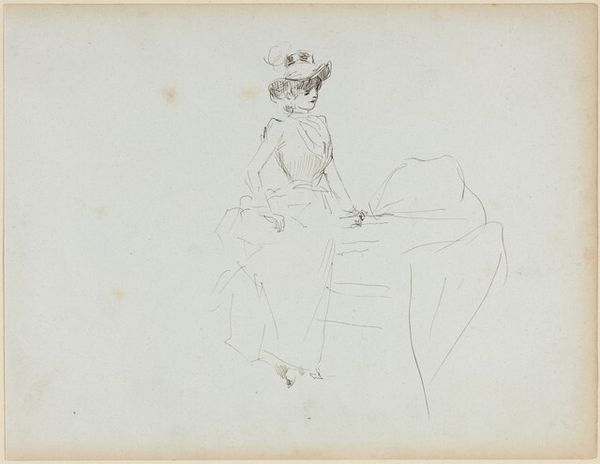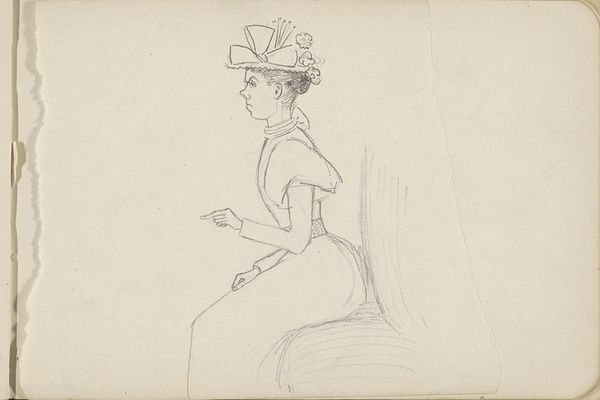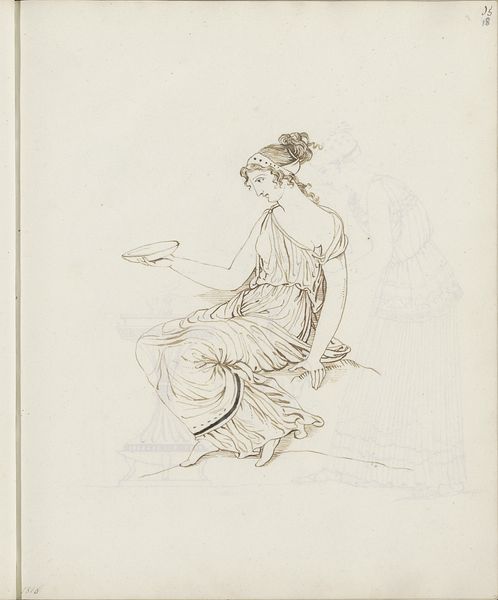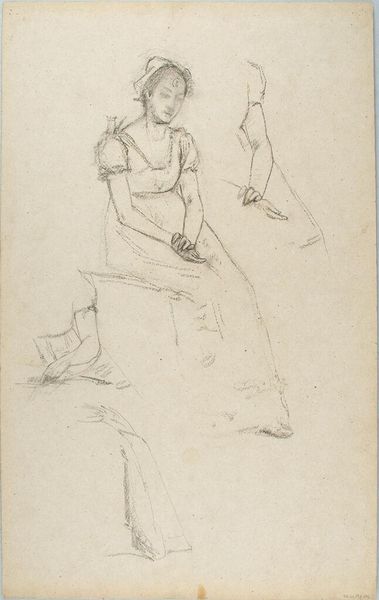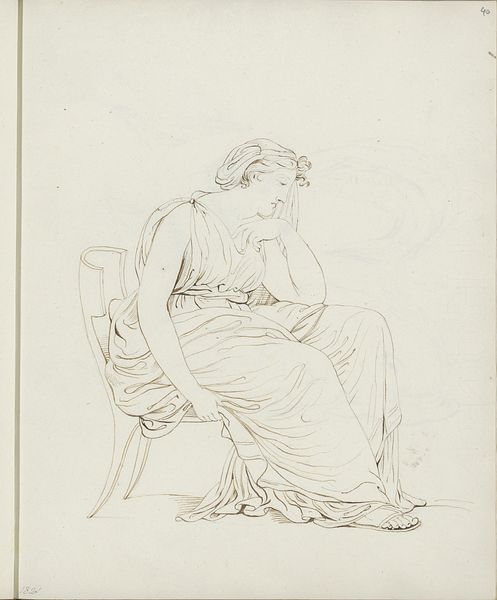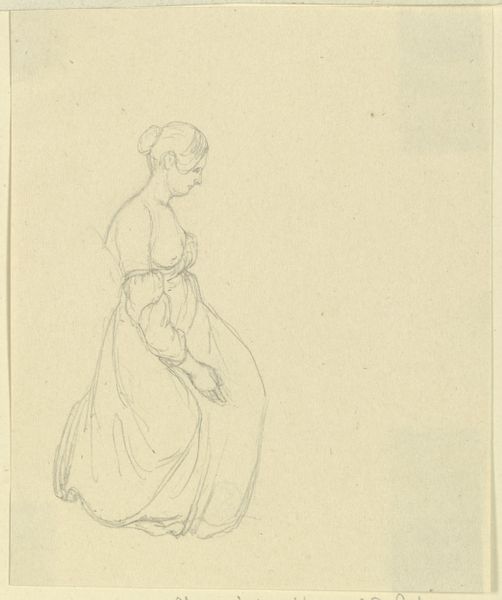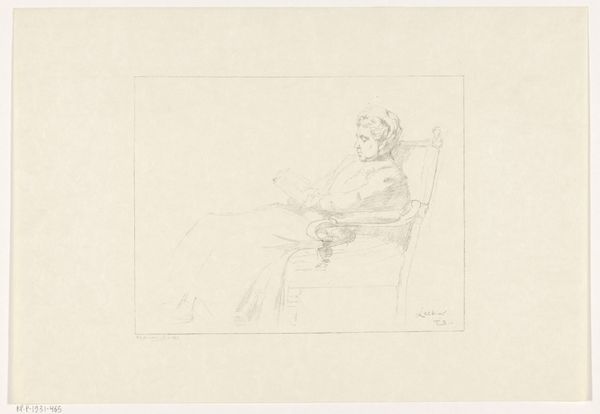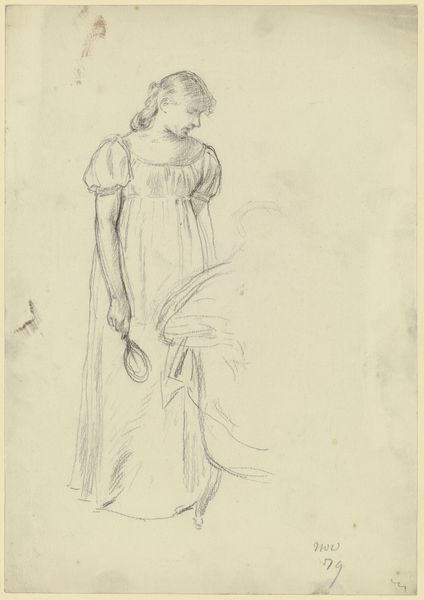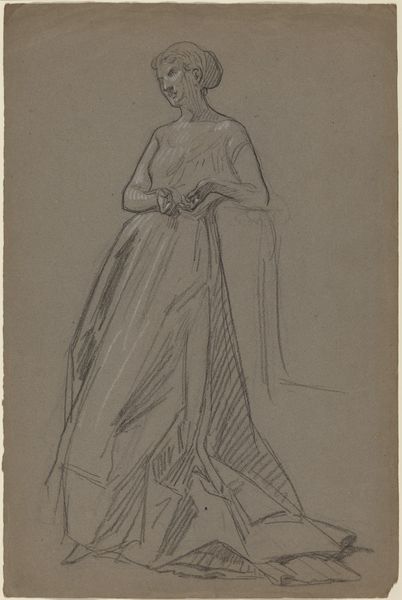
Bildnis der Elisabeth Malß, geborene Hofmann (Taunusreise) c. 1811
0:00
0:00
drawing, pencil
#
portrait
#
drawing
#
16_19th-century
#
pencil sketch
#
figuration
#
personal sketchbook
#
romanticism
#
pencil
Copyright: Public Domain
This drawing portrays Elisabeth Malß, née Hofmann, sketched by Christian Xeller. Note the plant depicted alongside her, reminiscent of the vanitas tradition, where flora symbolizes life's fleeting nature. Think of similar motifs found in Dutch still life paintings, where flowers in full bloom are paired with wilting leaves. Consider, too, the hat with its wide brim, a common accessory of the era, yet it also casts a shadow. Symbolically, such shadows often suggest hidden truths or the obscured aspects of existence. The sitter is depicted seated on the ground, a pose that echoes figures in classical art, particularly nymphs or muses in repose. It invokes a connection to nature, a romantic ideal that found expression in art and literature. The act of sitting in nature is a recurring motif, echoing in various forms, from ancient pastoral scenes to modern-day representations of leisure. This reflects a universal desire to connect with the natural world.
Comments
No comments
Be the first to comment and join the conversation on the ultimate creative platform.
